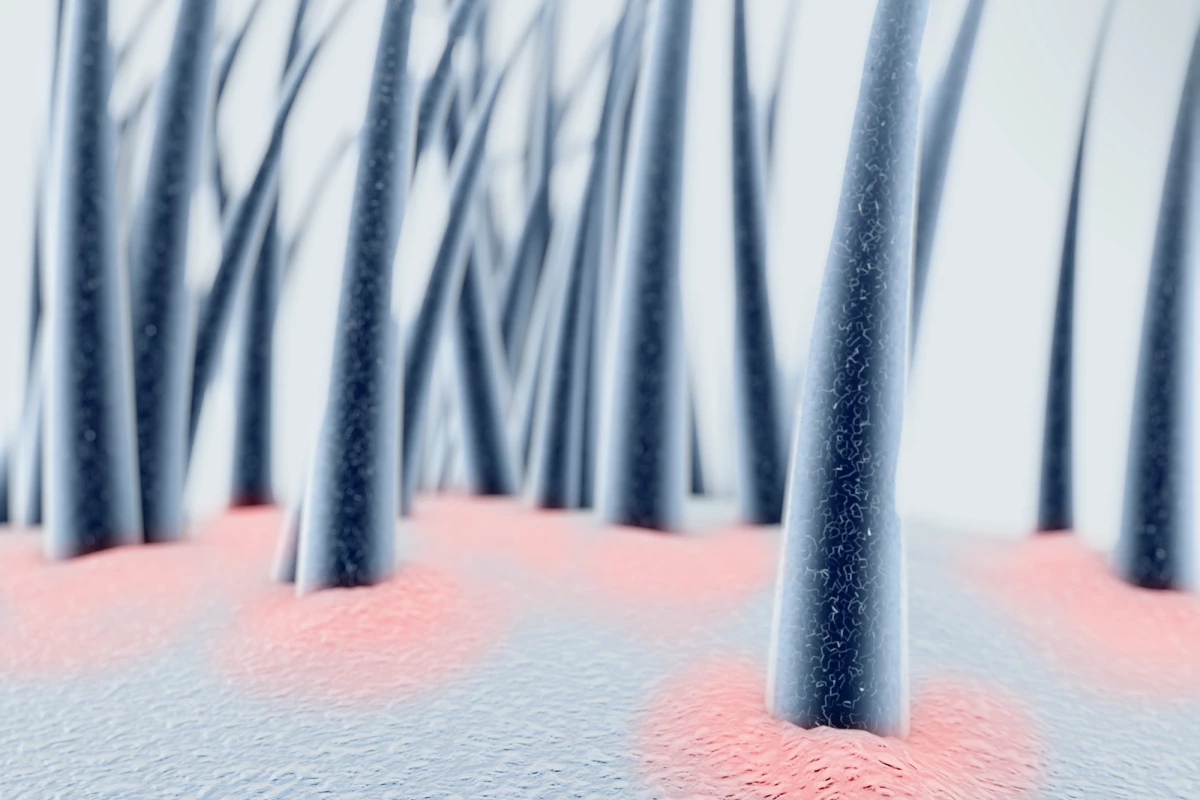Scientists studying the way hair follicles take shape in the human body have found new success in the lab, demonstrating a way of growing fully matured forms of them in culture. The breakthrough presents scientists with a novel platform to investigate hair follicle development, with hopes of pioneering advanced treatments for hair loss disorders.
We’ve seen scientists make some promising inroads into our understanding of hair follicle development of late, with many studies focusing on using stems cells to stimulate new growth in animal models. Researchers at Japan’s Yokohama National University sought to take this field into new terrain by developing fully functional hair follicles outside the body, though they have still leaned on animals for help.
Pluripotent stem cells derived from mice were used as the starting point for the team’s hair follicles, though this involved some serious problem solving. Morphogenesis is the process through which cells organize and transform into tissues and organs in organisms, but the way this plays out with regard to hair follicles remains poorly understood. So far, scientists have been unable to replicate this process in a laboratory dish.
The team took two types of embryonic cells and used a low-concentration a hydrogel to act as support structures called extracellular matrices, steering development of the cells in culture. This altered the arrangement of the two cell types and led to a core of epithelial cells forming, which was in turn surrounded by mesenchymal cells.
These two cell types are thought to play an important role in hair follicle morphogenesis during embryonic development. Arranging them in this core-shell configuration in the laboratory culture dish increased the contact area between the two cells and, according to the team, enhanced the interactions that drive hair follicle development.
These structures are described as organoids, which are lab-grown mini organs scientists are using to study everything from lung disease to cognitive disorders. The researchers were able to use their approach to develop fully mature hair follicles with hair shafts of around 3 mm in length after 23 days in culture, and did so with almost 100% efficiency. Importantly, the team was able to monitor the process of hair follicle morphogenesis and gain new insights into the signaling mechanisms behind it.

In another round of experiments, the scientists introduced a drug designed to promote hair color pigmentation into the culture, which significantly improved the pigmentation of the follicles. The hair follicle organoids were also transplanted into nude mice, where they generated new follicles within weeks across repeated cycles.
“Organoids were a promising tool to elucidate the mechanisms in hair follicle morphogenesis in vitro,” said Tatsuto Kageyama, an assistant professor with the faculty of engineering at Yokohama National University.
The scientists see their new organoids as promising new tools to study hair loss disorders such as alopecia, and aid the development of drugs to promote new growth. From here, they will attempt to adapt the technology to work with human cells rather than rodent ones, and then work toward those goals.
“Our next step is to use cells from human origin, and apply for drug development and regenerative medicine,” said Junji Fukuda, a professor with the faculty of engineering at Yokohama National University.
The research was published in the journal Science Advances.
Source: Yokohama National University via EurekAlert




